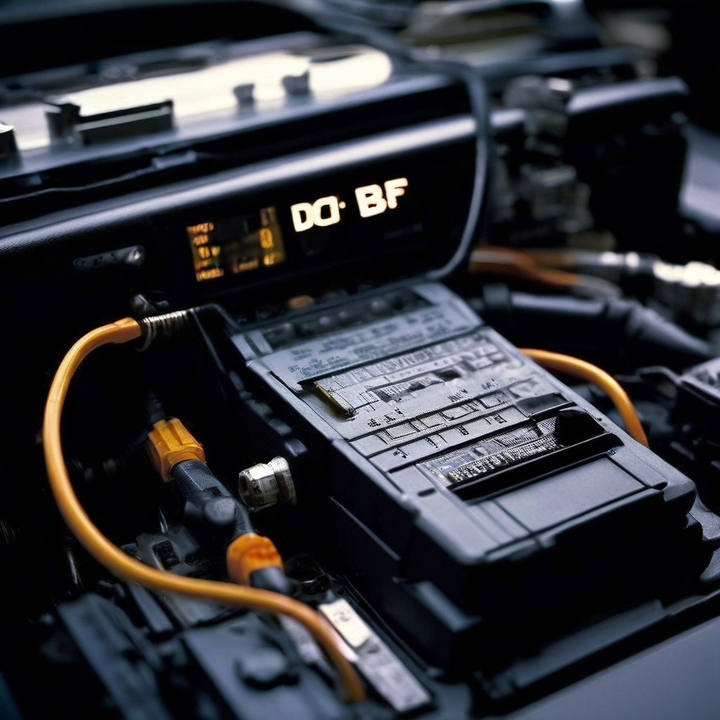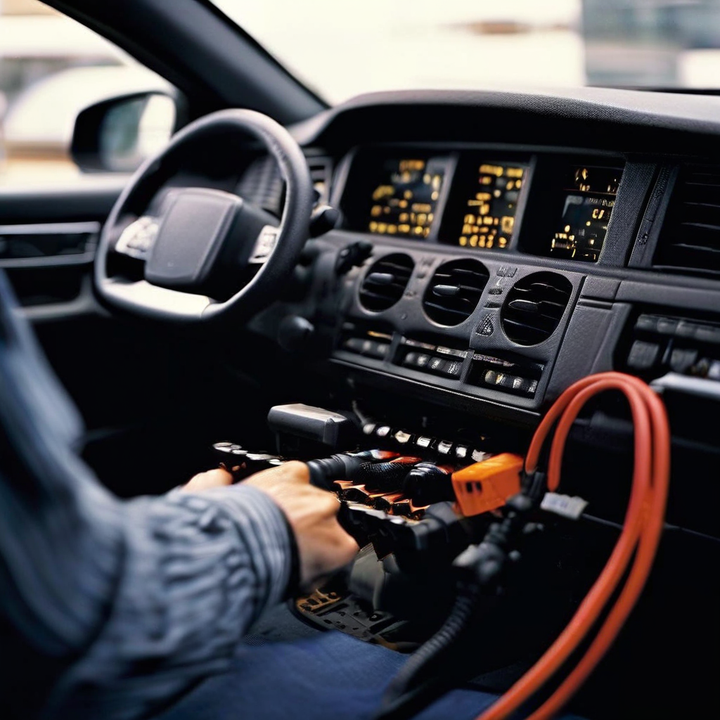


The diagnostic trouble code (DTC) P03BF indicates a problem with the cylinder 5 pressure sensor circuit on the vehicle. This code is set when the powertrain control module (PCM) detects a low voltage or low resistance condition in the cylinder 5 pressure sensor circuit.
First things first, let's break down what this code actually means. The P03BF code is a diagnostic trouble code (DTC) that indicates an issue with the cylinder 5 pressure sensor circuit. This sensor plays a crucial role in monitoring the pressure within the cylinder, which is essential for proper engine operation and emissions control.
When the powertrain control module (PCM) detects a low voltage signal from the cylinder 5 pressure sensor, it sets off the P03BF code as a warning light on your dashboard. This code can be triggered by a variety of issues, ranging from a faulty sensor to wiring problems or even a failure in the PCM itself.
Now, let's dive into the most common causes behind this pesky code:
| Cause | Description |
|---|---|
| Faulty Cylinder 5 Pressure Sensor | Pressure sensors can wear out over time or fail due to contamination, physical damage, or exposure to extreme temperatures. When the sensor goes kaput, it can send inaccurate readings or no reading at all to the PCM, triggering the P03BF code. |
| Wiring Issues | Damaged wires, open circuits, short circuits to ground, or loose/corroded electrical connections can all disrupt the signal from the pressure sensor to the PCM, causing the code to set. |
| Contamination or Debris | Contamination or debris can find its way into the pressure sensor, causing it to malfunction and send incorrect readings to the PCM. |
| Powertrain Control Module (PCM) Failure | In rare cases, the issue may lie with the PCM itself. If the PCM is faulty or failing, it may not be able to properly interpret the signals from the pressure sensor, leading to the P03BF code being set. |
Now that we know the potential culprits, let's dive into the diagnostic process:
The first step is always a good old-fashioned visual inspection. Check the wiring harness and connectors for any signs of damage, corrosion, or loose connections. A keen eye can often spot the problem before you even break out the tools.
Next up, it's time to break out the multimeter. Check for proper voltage supply and ground at the pressure sensor connector. If the voltage is off, you've likely found your wiring issue. Additionally, perform resistance tests on the pressure sensor itself to ensure it's within the manufacturer's specifications.
| Test | Description |
|---|---|
| Voltage Test | Check for proper voltage supply and ground at the pressure sensor connector. |
| Resistance Test | Perform resistance tests on the pressure sensor to ensure it's within the manufacturer's specifications. |
Modern scan tools can be a lifesaver when it comes to diagnosing issues like the P03BF code. Connect your scan tool and check the live data stream from the pressure sensor. If the readings are erratic or out of range, you've likely found your culprit.
Don't forget to check for any technical service bulletins (TSBs) related to this code for your specific vehicle model. Manufacturers often release these bulletins to address known issues and provide guidance on repairs.
Once you've identified the root cause, it's time to roll up your sleeves and get to work:
If the pressure sensor is indeed the culprit, the repair process is relatively straightforward:
Disconnect the negative battery cable
Locate and disconnect the pressure sensor electrical connector
Remove the old sensor
Install a shiny new OEM replacement
Reconnect everything
Clear the codes
If wiring issues are the root of the problem, it's time to break out the wire strippers and crimpers:
Repair or replace any damaged wiring or connectors as needed
Ensure all connections are clean and tight
In some cases, the entire wiring harness may need to be replaced if the damage is extensive or the wiring is inaccessible
Once you've resolved the P03BF code, it's important to take steps to prevent it from happening again:
Follow the manufacturer's recommended service intervals for inspecting and replacing sensors
Avoid exposing the engine to excessive heat or contamination
Use high-quality dielectric grease on electrical connections to prevent corrosion
Now, let's talk about the elephant in the room – cost. The cost of resolving the P03BF code can vary widely depending on the root cause and the vehicle's make and model.
| Repair | Typical Cost Range |
|---|---|
| New OEM Pressure Sensor | $50 to $200 |
| Wiring Repairs | $100 to $500 or more |
| Wiring Harness Replacement | $100 to $500 or more |
A new OEM pressure sensor typically costs between $50 to $200, which is relatively affordable. However, if wiring repairs or a complete wiring harness replacement is required, you could be looking at a bill ranging from $100 to $500 or more, depending on the extent of the damage and labor costs at a professional repair shop.
Of course, if you're a DIY enthusiast with the right tools and knowledge, you can potentially save a significant amount by tackling the repairs yourself.
Well, folks, that's the inside scoop on the P03BF code – Cylinder 5 Pressure Sensor Circuit Low. While it may seem like a daunting issue at first, with the right diagnostic approach and a bit of elbow grease, you can get to the bottom of this code and have your ride running smoothly again in no time.
Remember, preventive maintenance and a keen eye for potential issues can go a long way in avoiding costly repairs down the line. So, keep those sensors in tip-top shape, and your trusty steed will keep purring like a kitten.
Happy wrenching, my friends!
The most common symptoms include engine misfires, poor fuel economy, loss of power, and the check engine light illuminated. In some cases, there may be no noticeable symptoms.
While it is possible to drive with this code, it is not recommended as it can lead to further engine damage and increased emissions. It's best to have it diagnosed and repaired promptly.
Performing voltage and resistance tests on the sensor and inspecting the wiring harness can help pinpoint the root cause. Erratic or out-of-range sensor readings also indicate a faulty sensor.
Yes, replacing the pressure sensor is a relatively straightforward task that can be done by a DIY enthusiast with the right tools and knowledge. However, wiring repairs may require professional assistance.
Ignoring this code can lead to further engine damage, decreased fuel efficiency, and increased emissions. It's essential to address the issue promptly to avoid more costly repairs down the line.
Most manufacturers recommend replacing the pressure sensor every 60,000 to 100,000 miles or as part of scheduled maintenance intervals.
While it's uncommon, a faulty battery or alternator can potentially cause electrical issues that may trigger the P03BF code. It's essential to check these components during the diagnostic process.
No, the P03BF code is specifically related to the cylinder 5 pressure sensor circuit and is not directly caused by vacuum leaks. However, vacuum leaks can lead to other engine-related issues.
No, clearing the code without addressing the underlying issue is not recommended. The code will likely reappear, and the problem will persist, potentially leading to further damage.
While rare, it is possible for a software glitch or issue with the powertrain control module (PCM) to cause the P03BF code to be set incorrectly. In such cases, a software update or PCM replacement may be necessary.

Miguel started tinkering with car radios as a teenager, fascinated by the intricate dance of wires and circuits. This passion led him to pursue a career as an automotive electrician. For the past 10 years, Miguel has tackled everything from flickering headlights to mysterious electrical gremlins. He thrives on troubleshooting electrical problems and enjoys sharing his knowledge to empower car owners to understand their vehicles better.



